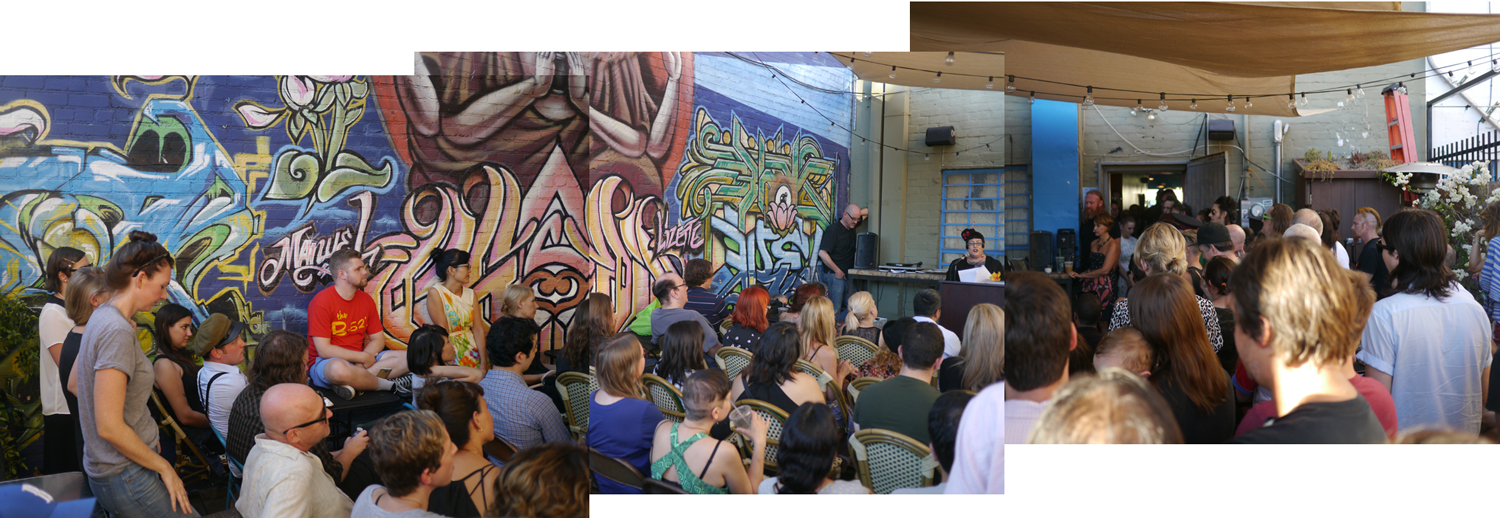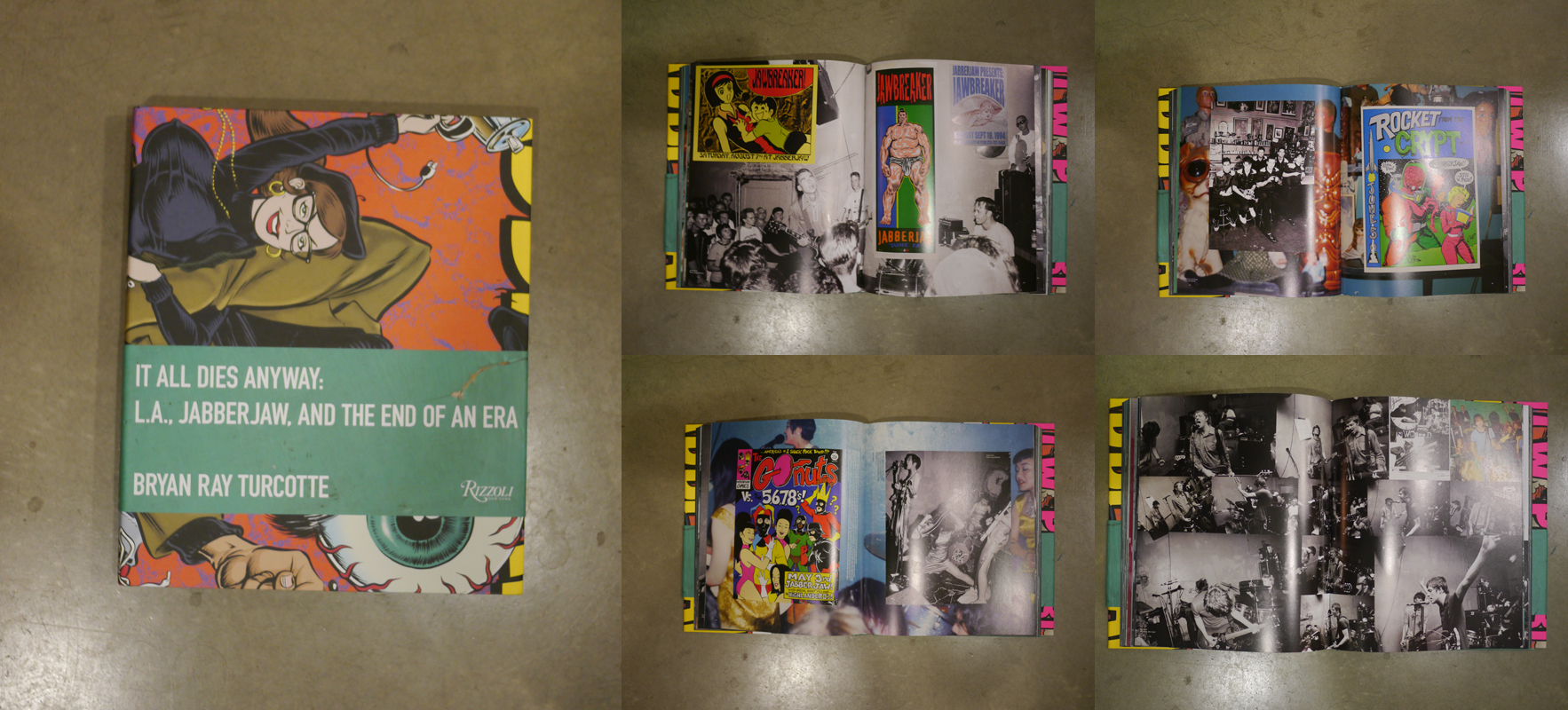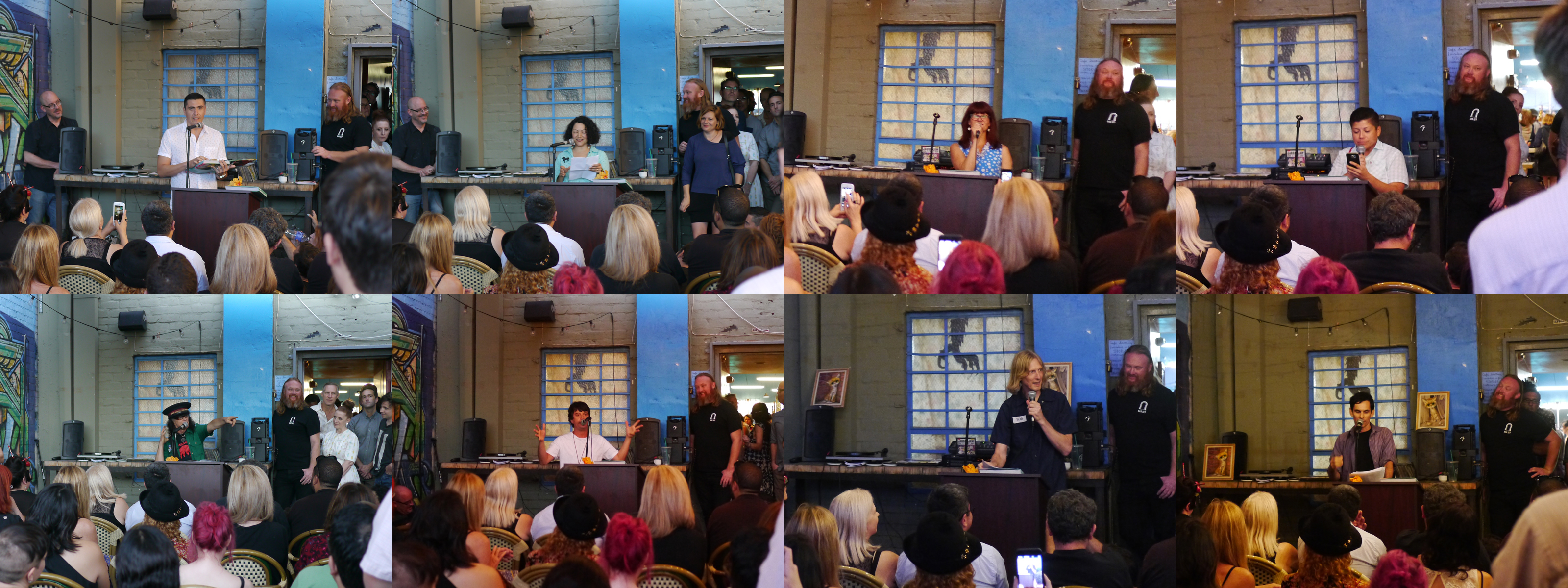Sep 22, 2015 The Jabberjaw book release event at Stories was like going to a show without the music

I vividly recall the night my twin brother Greg and I bailed early from our ten-year high school reunion and drove straight to Jabberjaw in our thrift store suits and ties to see our friends Emily’s Sassy Lime and The Peechees at Jabberjaw. The excitement of walking up the alley, hearing the music get louder, opening up the door, and feeling a wall of heat and sweat emanating from the tiny club on Pico contrasted so much with the air-conditioned hotel gathering by John Wayne Airport in Orange County. So did the feeling of being alive instead of looking back at gone by. Maybe it’s because we were neither that involved nor that popular back in school…
So it was interesting to finally get to crack open It All Dies Anyway: L.A., Jabberjaw, and the End of an Era. The coffee-table book about the dive that many of my friends and I frequented two or three nights a week was finally published after nearly ten years of work. I barely remembered the essay I submitted when the venue co-founder Michelle Carr put out a call for entries. Did it make the cut? Was it any good? Was it our turn to be the sad, nostalgic ones?
But before I purchased the book at Stories in Echo Park, I crammed myself into the patio along with other patrons, performers, and people who worked behind the counter to hear readings from the book. Of course it started with Michelle Carr, who recounted how she and Gary Dent founded the coffee house, art gallery, and performance space, and described its eight-year trajectory as L.A.’s epicenter of indie punk. Slug, Unwound, Seaweed, Sleater-Kinney, Bikini Kill, Rocket From the Crypt, Drive Like Jehu, L7, Melvins, JSBX, all the bands with Ian Svenonious–the list goes on and on. How lucky were we to see bands like that for five bucks in an all-ages dive with no tickets, booze, bouncers, or bullshit?
Michelle was followed by a parade of readers. There were artists and musicians but most of the speakers I recognized as being faces behind the counter (although many were in bands, as well). The stories became a became a blur of sweaty walls and cat piss, but Michael from The Three O’Clock’s story about a Joe Perry sighting and Eric from Hole’s L.A. Riots recollections stood out as being the funniest. I could hear those stories forever, but I guess I’ll have to find a magnifying glass and read them. The print is tiny!
The overstuffed venue and freakishly hot afternoon made it feel a lot like an actual Jabberjaw show. I even saw a lot of people that I would have seen back then: Gabie, Lynn, Craig, my sister Angelyn, and Happy, as well as that I didn’t take photos of because it was too crowded or they were across the room when I spotted them.
The book itself will thrill fans of photography as well as underground music of the ’90s, and I know a lot of the photographers whose images are showcased: Ben Clark, Craig Adelman, Eric Nakamura, Vicki Berndt. It’s as exciting to see their work on big pages as it is to see bands that stayed at my house (J Church, Kicking Giant, Seam, The Make-Up, Dub Narcotic Sound System…) as it is to look for familiar faces in the crowd shots. We Jabberjaw regulars can love the book on multiple levels.
It turns out my essay did make the cut and it ain’t bad. And looking back as the good ol’ days isn’t that pathetic when all of us still go to as many shows as possible and are doing interesting stuff. The DIY spirit that marked the era of Jabberjaw is still present in our lives, our careers, our art, and/or even parenthood for those of us who have kids. For us, this book isn’t sappy nostalgia that provides a distraction from our unhappy lives but documentation that shows us where we came from.
I understand there will be another Jabberjaw-related gathering at Wacko! in October. Hopefully, that means a photo show at La Luz de Jesus, too. See you there!
Buy It All Dies Anyway: L.A., Jabberjaw, and the End of an Era at your local indie book store, and follow Imprint on Twitter, Instagram, and Facebook, too!





